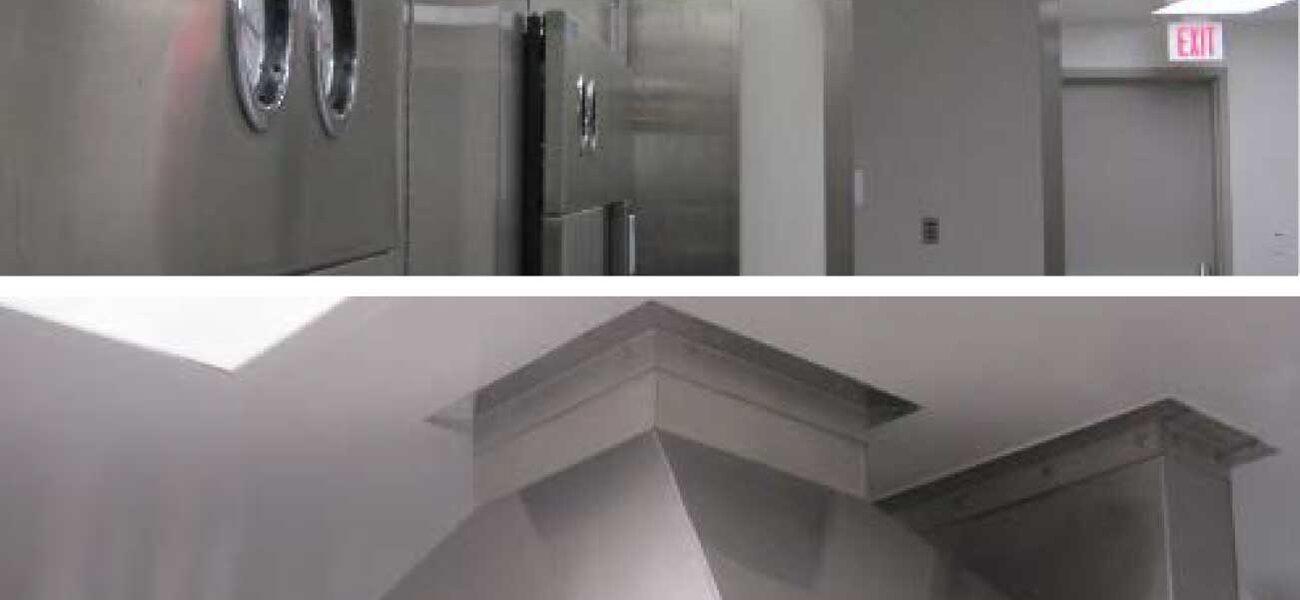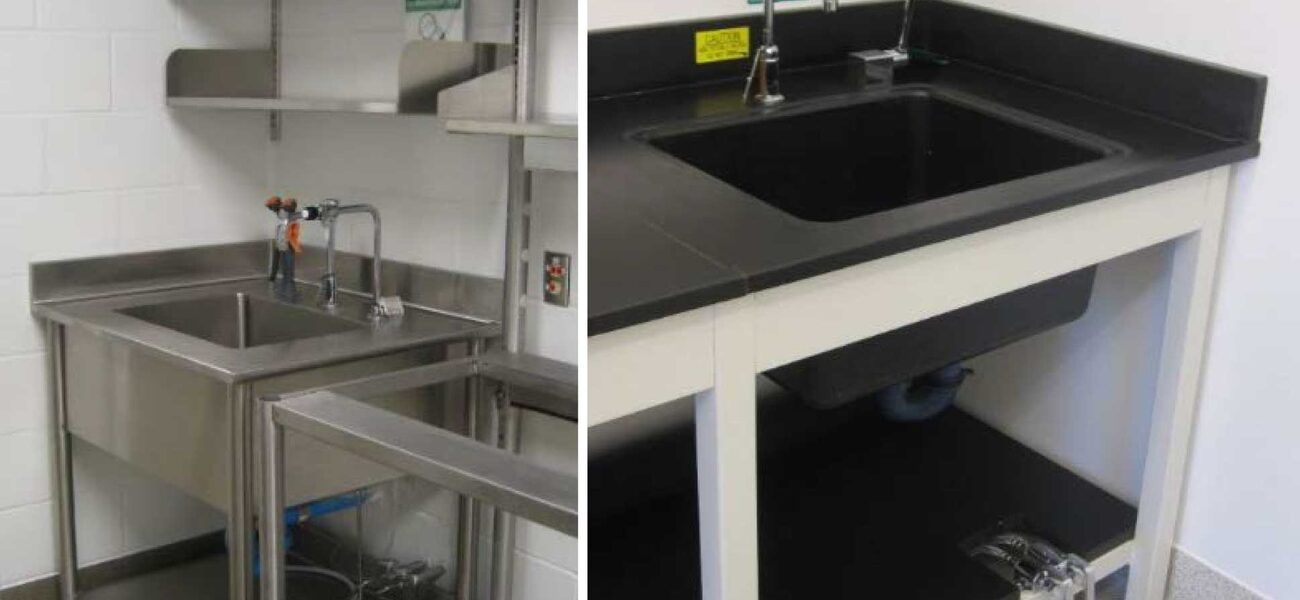Value engineering (VE) can save money on a BSL-3 project without compromising facility operations, lifecycle costs, regulatory compliance, or biocontainment requirements; if managed correctly, VE is an opportunity to improve a project, not just a cost-cutting tactic.
While VE typically has a negative reputation, Alex Clinton, LEED AP and associate principal at Perkins+Will, and Jared Machala, LEED AP and vice president at WSP/ccrd, have utilized the VE process on several BSL-3 projects with good results. “You can save money and improve the design. It doesn’t have to just be about cutting things out of the building,” says Clinton.
Sometimes called value management or value planning, the typical formal VE process should start once schematic design documents are in hand, with a streamlined team of decision-makers, including the construction manager, designers, and building owner. Ideally, most team members have a depth of experience on BSL-3 projects, and understand lab functions and containment requirements. The team brainstorms a VE list, and ranks potential cuts in terms of items that won’t significantly change the project, those that have minimal impact, and those considered major cuts.
“If we’ve gone through decision-making on the easy items and we’re not where we need to be on budget, we go to the next step, debate with the client, and make the slightly harder decisions,” says Clinton. “It’s extremely helpful to have the local contractor or construction manager involved to provide realistic prices on materials and equipment. The best VE you’re going to do is at the beginning of the project. If you integrate the construction team into the design process, you are VE’ing as you go along and making smarter design decisions.”
Common VE Options in BSL-3 Space
An attractive option for major savings can be to “shell for the future,” by designating empty space to later add items like specialized equipment or even program components. The downside is that this leaves owners with hard-to-fill holes or potentially awkward floor plans, if ideas change or money falls through. “It’s attractive to defer things and think you can still have them later,” says Clinton. “The tough question to face is, will you really be able to find that money later? Often we see that it doesn’t happen, and you are left with an empty space in an awkward location, or an empty pit that never receives the piece of equipment.”
A common option is finding value alternatives for wall and floor construction, doors and frames, casework, finishes, wall protection, and equipment. Depending on the use, lab doors and frames ideally may be fiberglass-reinforced plastic (FRP), or stainless steel, but hollow metal with a quality epoxy or urethane coating can work just as well. “We’ve done projects and VE’ed to painted metal doors and frames, and they’ve held up fine; accepting something like this often depends on the owner’s past experience,” says Clinton. Options for walls, flooring, and casework depend on the type of facility and intended use. An animal facility likely needs resinous flooring—epoxy, urethane, or methyl methacrylate (MMA)—and heavy-duty wall panels or block construction to withstand high impact, with chemical-resistant stainless steel counters and casework. Other facilities can use lower cost drywall, sheet vinyl or sheet rubber flooring, epoxy counter tops, and powder-coated metal frames. The decision-making should always be based on the facility’s function and purpose.
Equipment offers good options for VE. Sterilizers can be quite a costly investment, depending on the chamber size, but some manufacturers sell biocontainment autoclaves suitable for BSL-3 facilities for a much lower cost than others. “There is some really great value out there. The key, however, is to go through a very detailed substitution process and make sure you are getting the quality and performance that you expect,” says Clinton. If not carefully vetted, service, repair, and replacing proprietary parts or filters can add lifecycle costs. Items like sterilizers must also be carefully vetted to ensure all proper containment requirements are addressed.
VE Options for Engineering Systems
The biggest VE savings are often in MEP and HVAC systems. Rather than a designated HEPA filter housing per grille, or per suite in a BSL-3 lab, it’s possible to gang filters into larger housings. The savings comes up front from fewer housings, but also from having fewer filters to test and replace, and less overall maintenance. Bubble-tight dampers are commonly utilized to seal a room for gaseous decontamination and to mitigate reversal of airflow; these dampers are either manually operated, or actuated by electronic control or pneumatic air, with actuated dampers about $2,000 to $3,000 more expensive per damper. Savings from using manual dampers is significant if there are more than 50 dampers on a project. “The only downside is you can lose the option to shut down one suite while the others are operating,” says Machala. Access concerns are another significant factor when utilizing manual dampers. For air handling units (AHUs), it’s generally less expensive to provide multiple fans and one AHU. This won’t work well, however, for a live animal space that requires on-demand heating and cooling.
For stainless steel ductwork, 304L costs about 30 percent less than the standard 316L, making it a better VE choice. The exception is areas with significant moisture, such as from a steam wash, where the more corrosion-resistant 316L is preferable. “The air exhausted from a BSL-3 lab is pretty mild from a corrosion standpoint, so we almost always see value in using the 304L ductwork,” says Machala. For a VE approach to waste piping in a BSL-3 or lower-containment facility, polyvinylidene fluoride (PVDF), costs about half as much as stainless steel, typically has better chemical resistance, and is easier to install. The main downside is that PVDF is less heat resistant than stainless steel pipe.
Options for waste treatment in a BSL-3 lab vary widely. These include central heat-treatment systems, which start at $500,000; a chemical system of similar capacity for about $100,000; and waste treatment via a local system based on an SOP to simply collect waste for treatment, which costs about $10,000. While heat-treating waste before disposal is preferred for bio-containment and validation standards, depending on the facility, a lower cost option may suffice. “Chemical systems are newer and not quite as accepted from a validation standpoint. The choice depends greatly on the owner requirements and type of facility,” says Machala.
Real World VE
A case study for a BSL-3 containment project with constrained communication between owner, architect, and construction manager, shows how this set-up limits VE options. “It was not a good level of collaboration, which made decision-making difficult. We were purposely kept apart from the construction manager. If we talked among ourselves, it was almost considered collusion,” says Clinton. After the first meeting to discuss the schematic design, the construction manager quoted a price that was wildly over budget. The result of such a large starting overage was a knee-jerk client reaction toward arbitrary cost cutting, such as taking 10 percent of square footage across the building, and major redesign at all stages, such as removing equipment and entire programs only to bring them back later. “It was rough. We created a plan for the space, and then had to start pulling pieces out and squeezing square footage to meet budget. When you have to backfill those voids, it begins to significantly impact the functionality of the space,” says Clinton.
On the opposite end of the VE spectrum is the Texas A&M Veterinary Diagnostics Lab (TVMDL), a 100,000-sf project with BSL-2 diagnostic space, BSL-3 lab space, and a high-bay necropsy space with BSL-3 capability. On this project, the construction manager and design team worked closely starting at the beginning of schematic design to discuss design options, constructability, and cost impact. When the time for formal VE came, they developed together a list that ranked VE items by color: green/easy, yellow/possible but would impact program, and red/off limits. “We looked at not only cost, but also the impact each VE decision would have on function, safety, maintenance, and the guiding principles of the building,” says Clinton.
BSL-3 capability in the necropsy space gives the TVMDL flexibility to deal with potential unknowns that may require BSL-3 protocol, although the necropsy typically operates in BSL-2 mode. Working with a contractor who was very familiar with BSL-3 facilities helped the team discover that making the entire BSL-2 necropsy a BSL-3 space would save $285,000 over adding square footage and HVAC for a separate smaller BSL-3 necropsy. “It made more sense to create the entire space as BSL-3, although it won’t always operate that way. It was counterintuitive to what we might normally do, but we could easily quantify the savings,” says Machala. “That is our gold standard VE item, to not only reduce the cost but increase functionality.”
While some VE decisions seem counterintuitive, they can offer significant savings if well-researched and based on contractor input. On this project, about $100,000 in savings came from a manufacturer modification to the necropsy tissue digester to perform two separate functions: disposing of carcasses and heat-treating liquid waste. “The modified equipment was slightly more expensive, but less expensive than having both a digester and a liquid decontamination system,” says Machala. Also, putting the entire building on emergency power required purchasing a bigger generator, but saved about $365,000 by greatly simplifying electrical distribution.
Other savings include the following, keeping in mind that these figures represent actual cost savings for this project. Others may experience different results depending on region, bidding climate, and other factors.
- Reducing the lab planning module of the building from 11 feet to 10 feet, 6 inches, saved $200,000.
- Eliminating redundant sterilizers at the BSL-3 lab suites, opting to use the BSL-2 units as backups, saved $125,000.
- Replacing two fully redundant air handling units for one with redundant fans saved $100,000.
- Ganging the bioseal dampers, rather than installing individual dampers at each room grille, saved $225,000.
- Using polypropylene biowaste pipe instead of PVDF saved $375,000.
- Using drywall construction, sheet rubber flooring, and painted metal casework in the BSL-3 labs saved $100,000.
Overall, VE offers multiple opportunities for significant savings on a BSL-3 project. “This can be done anywhere on any project, if you have the right people in the right mindset,” says Clinton. “Cost is the catalyst, but it’s a conversation that should happen regardless; it is important to find a way to reframe the VE process and brainstorm openly about cost and efficiency options that will benefit the project.”
By Mary Beth Rohde



